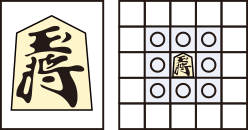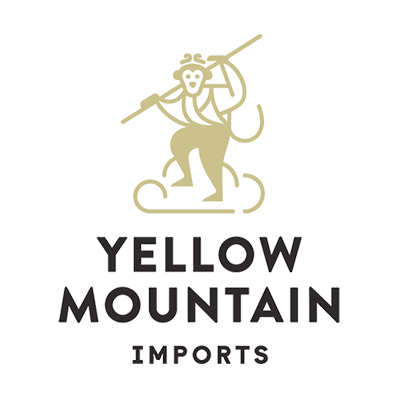How to Play Shogi / Japanese Chess / 将棋
| Shogi, also known as Japanese Chess, is the most popular chess variant native to Japan and has been around in its current form since the 16th century. One of the most exciting aspects of the game is as compared to international chess, a captured piece can be returned to the board. This allows for a highly dynamic game resulting in very few draws. |
Equipment
The board is composed of rectangles in a grid of 9 "ranks" (rows) and 9 "files" (columns). Pieces are played within the rectangles and with the exception of the king, opposing pieces are differentiated by orientation and not by color. Each piece always points toward the opponent. On the front side in black identifying the piece is the Chinese characters used in Japanese (kanji). On the reverse side, with the exception of the king and gold general, are one or two other characters in red. The red kanji indicate a piece that has been promoted and has gained an increased power of movement.
Arrangement
The starting positions of the pieces are arranged as shown below.

Pieces
 King, "Osho", 王將A king can move one square in any direction. |
 Opposing King, "Gyokusho", 玉將Same as above. |
 Gold General ("Gold"), "Kinsho", 金将A gold general can move one square in any direction except diagonally back. |
 Silver General ("Silver"), "Ginsho", 銀将A silver general can move one square diagonally any direction or one space forward. |
 Promoted Silver, "Narigin", 成銀A promoted silver moves the same as gold general. |
 Knight, "Keima", 桂馬A knight can jump one square forward, plus one square diagonally forward. It is the only piece allowed to jump other pieces in its path. |
 Promoted Knight, "Narikei", 成桂A promoted knight also moves the same as gold general. |
 Lance, "Kyosha" 香車A lance can move any number of free squares directly forward. It cannot move in any other direction. |
 Promoted Lance, "Narikyo" 成香A promoted lance also moves the same as a gold general. |
 Bishop, "Kakugyo" 角行A bishop can move any number of free squares in any diagonal direction. |
 Promoted bishop ("Horse"), "Ryuma" 龍馬A promoted bishop can make the moves of a bishop or the moves of a king. |
 Rook, "Hisha" 飛車A rook can move any number of free squares forward, backward, left or right. |
 Promoted Rook ("Dragon"), "Ryuo" 龍王A promoted rook can make the moves of a rook or the moves of a king. |
 Pawn, "Fuhyo" 歩兵A pawn can only move one square forward. |
 Promoted Pawn, "Tokin" と金A promoted pawn also moves the same as gold general. |
Gameplay
Each side alternates, moving one piece in each turn.
Pieces capture by using their normal moves and landing on a square occupied by an enemy piece. Captured pieces may not be hidden from view, as they can later be reintroduced into play, and have a crucial impact on the course of the game.
A player can choose to drop a captured piece as one of its own on any vacant square on the board, rather than move a piece on his or her turn. The piece is always dropped with its un-promoted value face up. A player may not drop a pawn onto a "file" which already contains one of its own pawns. This rule does not apply to files occupied by promoted pawns. Also, a pawn may not be dropped to give immediate checkmate (thus winning the game). However, other pieces may be dropped to give immediate checkmate. A final rule on dropping: no piece may be dropped onto a square from which it will have no possible future move. A pawn, knight or lance cannot be dropped onto the far rank. The knight also cannot be dropped on the 2nd furthest rank.
Each player has a promotion zone on the far third of the board, the three ranks occupied by the opposing pieces at setup. If a piece moves (but is not dropped) into, out of, or within the zone, the player may choose to promote the piece at the end of the turn. Promotion is indicated by turning the piece over after a move, showing its promoted value (cursive side, most often in red). The piece maintains its promoted value until it is captured. If a pawn or lance reaches the far rank or a knight reaches either of the two farthest ranks, it must promote, otherwise, it would have no legal move on subsequent turns.
Shop for a Shogi Japanese Chess Set
© 2024 Yellow Mountain Imports, Inc.
